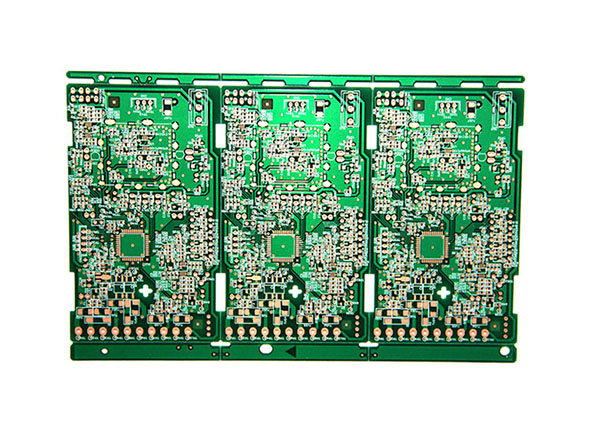A Closer Look at Printed Circuit Boards (PCBs): The Backbone of Modern Electronics
Introduction:
In the realm of modern electronics, printed circuit boards (PCBs) are the unsung heroes that enable our devices to function seamlessly. These compact and intricate boards are at the heart of almost every electronic gadget we use, from smartphones and laptops to medical equipment and automotive systems. In this article, we will delve into the world of PCBs, exploring their construction, components, and significance.
 Figure 1: FR4, 1OZ, 1.5MM PCB
Figure 1: FR4, 1OZ, 1.5MM PCB
Understanding PCBs:
At its core, a PCB is a flat board made of non-conductive material, typically fiberglass-reinforced epoxy, with a thin layer of copper foil laminated onto it. The copper layer is etched to create conductive paths, called traces, that connect various electronic components on the board. These components include resistors, capacitors, diodes, transistors, and integrated circuits (ICs) that form the building blocks of electronic systems.
Table 1: Common Components Found on a PCB
|
Component
|
Description
|
|
Resistors
|
Control the flow of electric current
|
|
Capacitors
|
Store and release electrical energy
|
|
Diodes
|
Allow current flow in one direction
|
|
Transistors
|
Amplify and switch electronic signals
|
|
Integrated Circuits (ICs)
|
Perform specific functions within a system
|
The Importance of PCBs:
PCBs are the backbone of modern electronics, playing a critical role in ensuring reliable and efficient operation. Their compact size, durability, and ability to accommodate complex circuits make them indispensable. Moreover, the use of PCBs greatly simplifies the assembly process, reducing costs and time required for production.
Beyond their technical advantages, PCBs offer versatility. They can be customized to fit specific requirements, enabling designers to create products with different form factors, such as rigid, flexible, or rigid-flex boards. This flexibility opens up new possibilities in industries like aerospace, medical, and wearable technology, where space constraints and unique shapes are often encountered.

Conclusion:
Printed circuit boards are the unsung heroes that power the electronic devices we rely on daily. Their intricate construction, intelligent design, and reliability make them vital components in the world of modern technology. By understanding the importance and functionality of PCBs, we can appreciate the engineering marvel behind our favorite gadgets and anticipate the continued advancements they will enable in the future.
We hope this article has provided you with valuable insights into the world of PCBs. Feel free to share your thoughts and questions in the comments section below!
Note: The picture and table in this blog post are for illustrative purposes only.

 Englishen
Englishen











